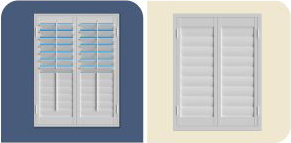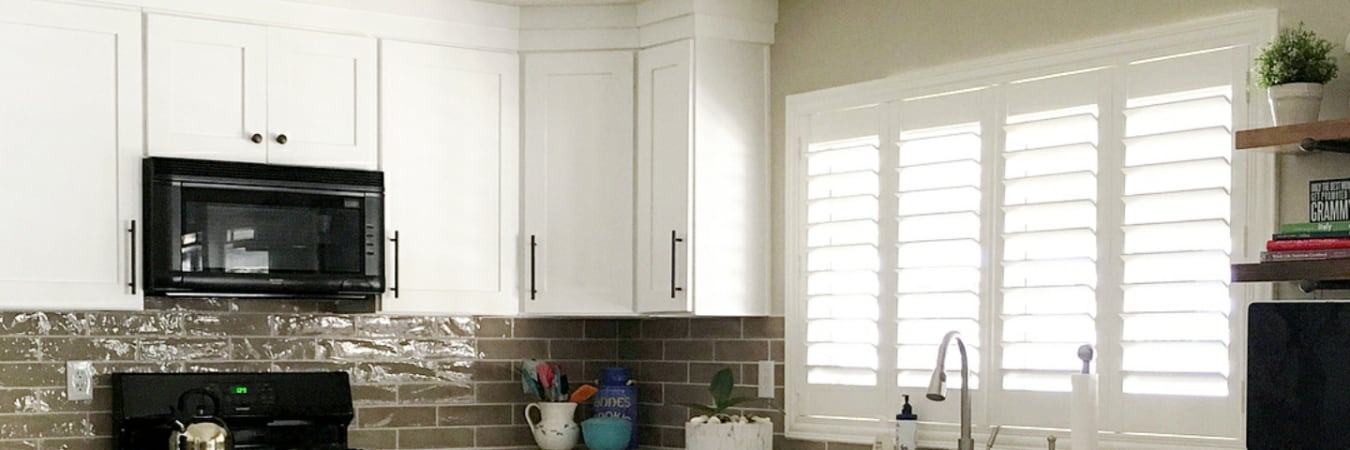
Benefits of Hidden Tilt Rods On Your Plantation Shutters in Boston
When looking at plantation shutters, you’ll have a few choices to make. Do I need real wood shutters or faux wood shutters? What louver width should I get? What color of window treatments will work best with my home?
One option you may not be aware of is the decision between a normal front-mount tilt rod or a hidden or rear-mount tilt rod. Let’s look at some benefits and drawbacks of hidden tilt rods, and if you should pick them for your plantation shutters in Boston.
What Are Hidden and Rear-Mounted Tilt Rods?
Most people are acquainted with conventional plantation shutters where the louvers move by a center tilt rod. When you need to adjust the shutters to let in more or less light, you just use the tilt rod and slide it up or down to slant the louvers.
A rear-mount tilt rod is a thin metal strip on the far side of the louver that is barely visible from the front. When you slant one louver, all the louvers move as well.
Some companies offer a hidden tilt rod that’s in the side of the treatment to control the louvers’ movement. Unfortunately, these hidden tilt rods are more prone to break and tough to fix, which is why our shutters use hidden tilt rods as rear-mount only.
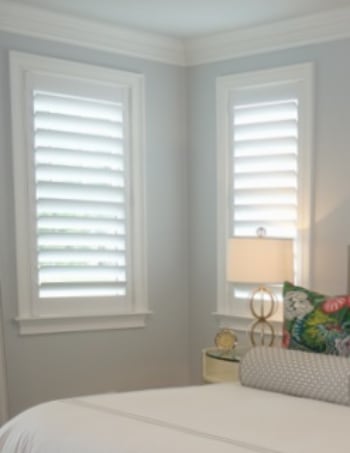
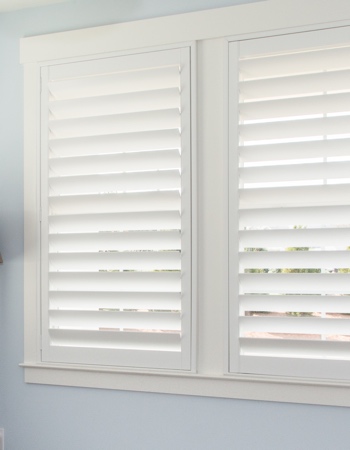
What Are the Pros of Rear-Mount and Hidden Tilt Rods?
Hidden or rear-mount tilt rods can bring a few advantages over conventional front-mounted tilt rods.
-
Contemporary look - Plantation shutters with hidden tilt rods work with interiors that have a modern or contemporary style because of their streamlined shape.
-
Helps with thin or tiny windows - Your thin and tiny windows may get use from hidden tilt rods due to their unfussy look.
What Are Some Cons of Hidden Tilt Rods?
Hidden or rear-mounted tilt rods aren’t perfect. Here’s a list of some drawbacks to hidden tilt rods.
-
Shutters with hidden tilt rods might appear too modern for some homeowners - Some homeowners in Boston like the familiar plantation shutter look and design with the tilt rod where people can see it. The front tilt rod shows more shape and substance to your shutters, versus plantation shutters using a hidden tilt rod where the feel is more streamlined.
-
Some people find front-facing tilt rods less of a hassle - Front-facing tilt rods can be more user-friendly for some homeowners to operate. You can move the tilt rod and adjust the louvers as needed, instead of having to tilt the louvers themselves.
What Homeowners Should Think About Hidden Tilt Rods on Their Shutters?
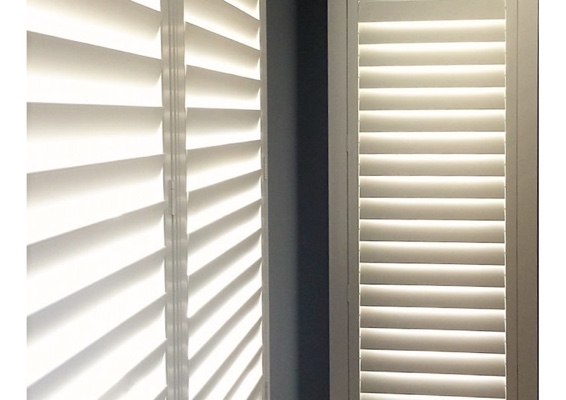
You may also want to look at lifestyle needs, like pets and kids. Some people in Boston who run child care from their home request hidden or rear-mount tilt rods so that there’s a smaller chance of a child breaking a front-mounted tilt rod.
Need More Help Picking the Best Window Treatment For Your Windows?
If you’re interested in buying plantation shutters in Boston but need some assistance, give us a call at 781-352-2205 or complete the form below to arrange a free in-home consultation. Our reps will bring samples and we’ll demonstrate a variety of shutter options - including rear tilt rod options - so you can see them in your own home.


